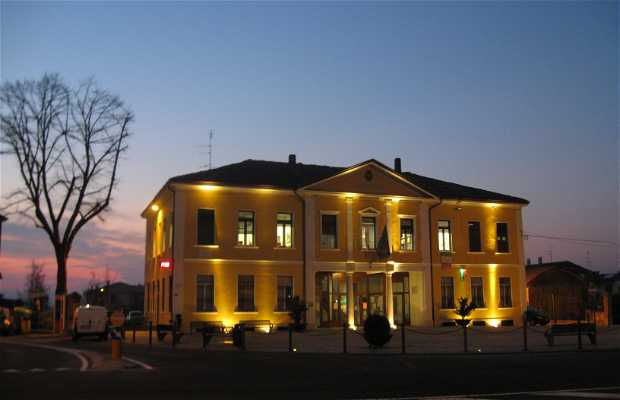Allan Robert P. J.
Gossolengo, river Trebbia and liver Etruscan
Gossolengo, rio Trebbia e fígado etrusco
Gossolengo fica a poucos quilômetros de Piacenza, às margens do rio Trebbia. A história da cidade está ligada à da vizinha capitala da provincia e às lutas pelo poder local. À origem do assentamento estão os Beneditinos de San Savino e os monges da Catedral de Piacenza. Ainda hoje ruínas dos moinhos nos muitos córregos atestam a vocação agrícola da cidade, e o castelo do fim do século XII é parcialmente habitado, encontrando-se em bom estado de conservação. A igreja de San Quintino é recente.
O brasão da cidade representa o rio Trebbia e um elefante, recordando uma batalha às margens do Trebbia ocorrida no ano de 218 a. C., durante a II Guerra Púnica, entre as legiões de Tiberio e as legiões cartagineses de Anibal (que teria atravessad os Alpes com elefantes).
Gossolengo é dividida em diversas frações (distritos) e é zona arqueológica com descobertas da era paleolítica. A descoberta mais famosa é o “Fígado Etrusco”, encontrado em 1877 e datado como sendo do século II a. C., atualmente conservado no Museu Cívico de Piacenza. Trata-se de um objeto de bronze usado para adivinhações. O próprio nome da cidade deriva de um fêmur (talvez de elefante) encontrado na região: “osso longo”.
Gossolengo is a few miles from Piacenza, the river Trebbia. The town's history is linked to the neighboring province of equitya and struggles for local power. At the origin of the settlement are the Benedictines of San Savino and the monks of the Cathedral of Piacenza. Even today the ruins of mills in many streams attest to the agricultural vocation of the city and the castle of the end of the twelfth century is partially inhabited, and is in good condition. The church of San Quintino is recent. The coat of arms of the city is the river Trebbia and an elephant, recalling a battle on the banks of Trebbia occurred in the year 218. C., during the Second Punic War, between the legions and legions of Tiberio Carthaginians of Hannibal (who would atravessad the Alps with elephants). Gossolengo is divided into several fractions (districts) and is archaeological zone with discoveries of Paleolithic era. The most famous discovery is the "Liver Etruscan", found in 1877 and dated to the second century. C., now preserved in the Museo Civico of Piacenza. It is an object of bronze used for divination. The name of the city derives from a femur (maybe elephant) found in the region: "long bone".



+9

